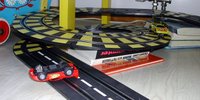Barrow revelations

Yesterday the 2004 issue of Lund Archaeological Review arrived. (Yes, they're behind schedule.) It contains a short, sweet and extremely interesting paper on barrows by Anders Berntsson.
Scandinavian archaeologists have long believed that the great barrows of prehistory represent a great investment in collective labour. More recently, it has also been suggested that as the barrows were made of grass turf, they also represent large-scale destruction of grazing land, a crucial resource to a cattle-based economy.
Berntsson makes two observations that turn this reasoning upside down.
Firstly, there is a simple error in the most widely quoted calculation of the amount of labour necessary to build a really huge Danish barrow. Instead of 13000 man-days of ten hours, it would actually have taken 3300 man-days. In other words, 300 people could have done it in eleven days. To build a normal size Scanian Bronze Age barrow in eleven days, you would only need 40 people. This brings the commanding power of the hypothetical Bronze Age chiefs down quite a few notches.
Secondly, the barrow building societies of Scandinavian prehistory did keep cattle, but they also grew crops, and the fields were tilled with ards. An ard is a primitive plough, one of the drawbacks of which is that it cannot cut turf. Turf. The kind that was used to build... barrows.
So the breaking of old fallow/grazing land for cultivation in these societies would have entailed the removal of a huge pile of turf. That could be put to creative use, for instance in the building of burial monuments, which would be particularly apt to mark ownership of newly cleared farmland.
I like this paper so much that I'd happily work for eleven days on Anders Berntsson's barrow if opportunity presented itself.
Berntsson, A. 2006. Me and you and a case of beer. How the Bronze Age barrows were built? Lund Archaeological Review 2004 (antedated). University of Lund.[More blog entries about barrows, prehistory, archaeology, Denmark, Sweden; gravhög, bronsåldern, Skåne, Danmark, arkeologi.]




















